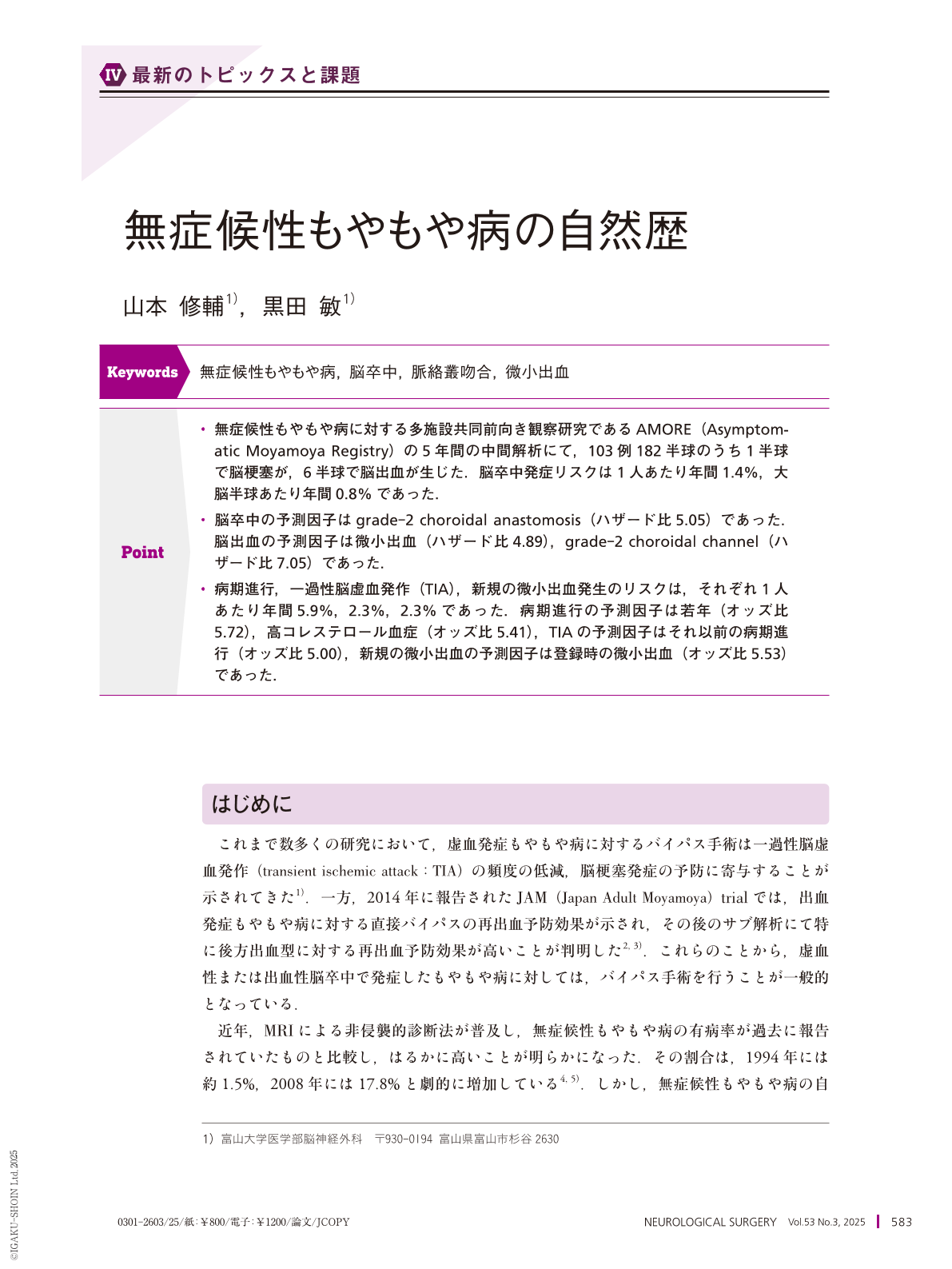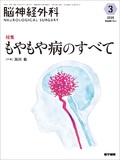Japanese
English
- 有料閲覧
- Abstract 文献概要
- 1ページ目 Look Inside
- 参考文献 Reference
Point
・無症候性もやもや病に対する多施設共同前向き観察研究であるAMORE(Asymptomatic Moyamoya Registry)の5年間の中間解析にて,103例182半球のうち1半球で脳梗塞が,6半球で脳出血が生じた.脳卒中発症リスクは1人あたり年間1.4%,大脳半球あたり年間0.8%であった.
・脳卒中の予測因子はgrade-2 choroidal anastomosis(ハザード比5.05)であった.脳出血の予測因子は微小出血(ハザード比4.89),grade-2 choroidal channel(ハザード比7.05)であった.
・病期進行,一過性脳虚血発作(TIA),新規の微小出血発生のリスクは,それぞれ1人あたり年間5.9%,2.3%,2.3%であった.病期進行の予測因子は若年(オッズ比5.72),高コレステロール血症(オッズ比5.41),TIAの予測因子はそれ以前の病期進行(オッズ比5.00),新規の微小出血の予測因子は登録時の微小出血(オッズ比5.53)であった.
Emerging evidence obtained as a result of recent advancements in non-invasive diagnostic modalities indicates that the incidence of asymptomatic moyamoya disease may be much higher than previously reported. However, there are currently no established guidelines for managing asymptomatic moyamoya disease because of the lack of sufficient information regarding its clinical features, prognosis, and treatment strategies. To address these issues, we conducted a multicenter prospective cohort study, the Asymptomatic Moyamoya Registry(AMORE), in Japan. The interim analysis of the AMORE revealed that affected hemispheres may carry a 1.0% annual risk of stroke, mainly hemorrhagic stroke, in asymptomatic moyamoya disease. Grade-2 choroidal anastomosis was found to be an independent predictor of stroke, whereas microbleeds and Grade-2 choroidal anastomosis were independent predictors of hemorrhagic stroke. The annual risk of disease progression, transient ischemic stroke(TIA), and de novo microbleeds were 5.9%, 2.3%, and 2.3%, respectively. Younger age and hypercholesterolemia were predictors of disease progression; disease progression prior to TIA was a significant predictor of TIA, and microbleeds at the time of enrollment were significant predictors of de novo microbleeds. Further research on the impact of genetic mutations and cerebral hemodynamics on the prognosis of asymptomatic moyamoya disease is warranted.

Copyright © 2025, Igaku-Shoin Ltd. All rights reserved.


